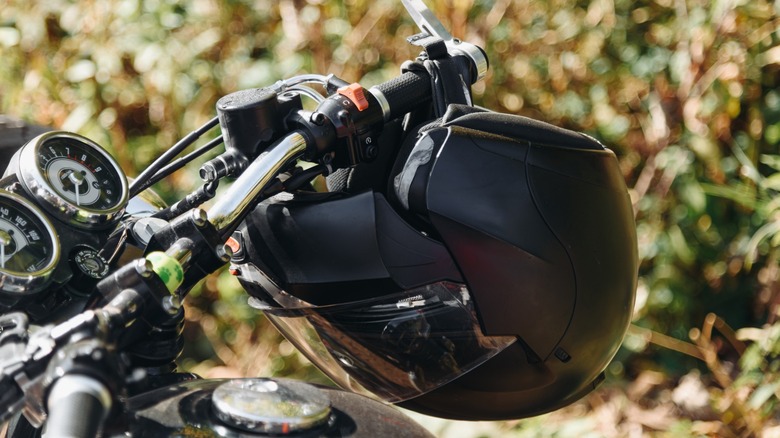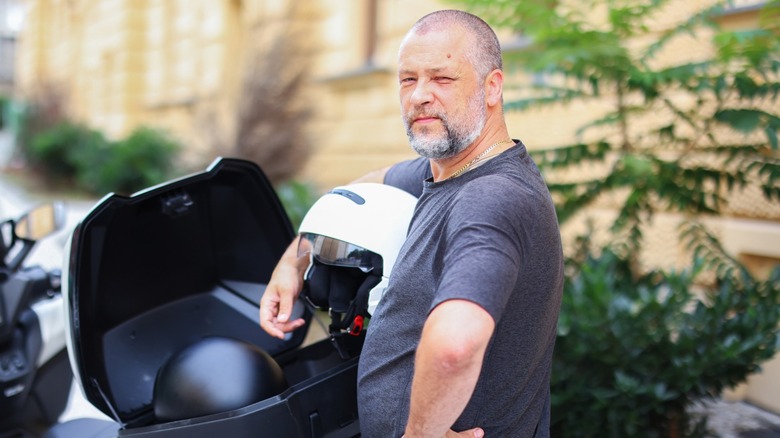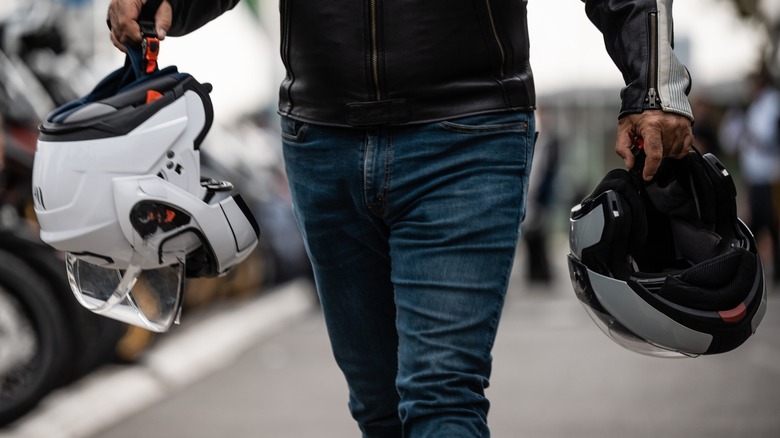What Are Bikers Supposed To Do With Their Helmets When Parked?
We may receive a commission on purchases made from links.
Buying a motorcycle helmet from the best brands can lead to a bit of sticker shock, with some models costing close to a thousand dollars. An investment like that makes sense when you consider how important protecting your head is. After spending that much money on a helmet, you'll probably want to take care of it. But we'll leave general care and cleaning instructions to the owner's manual that came with your new lid and focus on ways to keep a biker's helmet safe while you're parked away from home.
As a biker, you essentially have two options for your helmet when parked — leave it with your bike or take it with you. These options have pros and cons, and most bikers employ a mixture of both from time to time, depending on circumstances. A motorcycle helmet exists in a world fraught with danger. While its most important job is protecting your head if you get into an accident, it can also be stolen, vandalized, or suffer accidental damage when you're not wearing it.
Leaving a motorcycle helmet with the bike
Bikers often choose to leave their motorcycle helmets with their bikes for the sake of convenience. Most motorcycles include a mechanism that locks the helmet securely through the D-rings of the helmet's chin strap. Another option is to use a cable-lock threaded through the D-rings of the helmet or chin-guard of a full-face helmet and secured to something solid, such as the triple-clamp or sissy bar if the motorcycle is so equipped.
The problem with these external locking options is that the helmet is left exposed to the surrounding environment. Depending on where the motorcycle is parked, that could include dust, precipitation, or pests — including those of the human variety. Unfortunately, some of the more problematic two-legged pests could vandalize or damage a helmet. If the motorcycle being parked is a Harley or non-Harley bagger type, it may have enough storage space in the saddlebags or trunk to store one or more helmets securely inside. If it's an adventure, naked, or sport bike without such provisions, there are aftermarket options to add lockable storage to nearly any bike. One example is the Rhinowalk Tail Bag, which retails for $109.99 and can double as a backpack to carry a helmet.
Carrying a motorcycle helmet when leaving the bike
Many budget-friendly motorcycles from well-known brands don't come equipped with any way to keep a helmet locked up and out of sight. On top of that, their style often doesn't mesh well with bulky saddlebags or rear-mounted trunks. If you're a biker facing this dilemma, and you don't want to leave your helmet exposed on the bike, you have no choice but to take it with you when parked.
We've already introduced the Rhinowalk Tail Bag as one option for carrying a helmet with you when leaving the bike. Another simple and affordable option is the EZ-GO motorcycle helmet carrier strap, which costs $19.94 on Amazon. You can use the chin strap or chin bar to carry your helmet if you don't need to keep your hands free. While the backpack option provides more protection from bumps and scuffs, it's important to be mindful and not bang your helmet into things, no matter how you choose to carry it.


